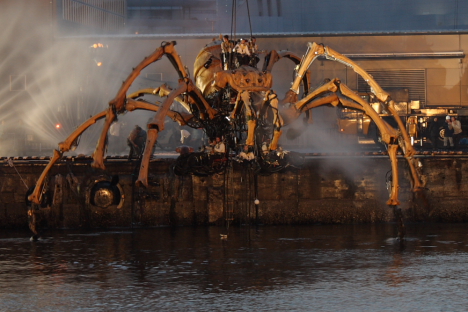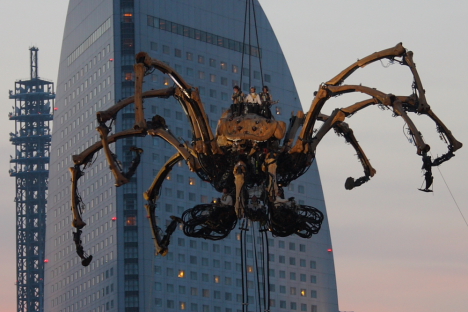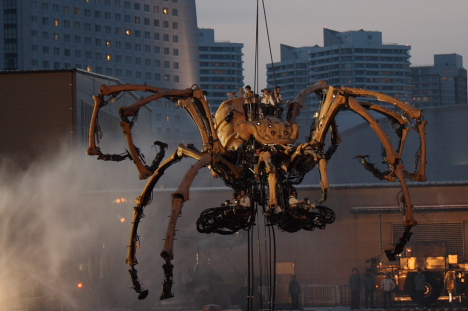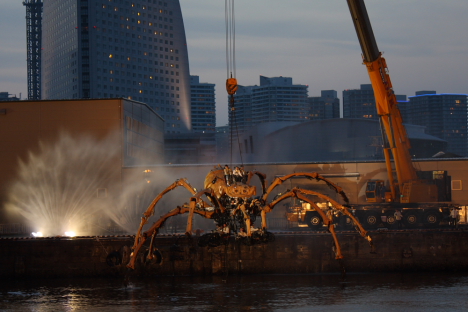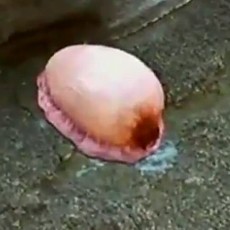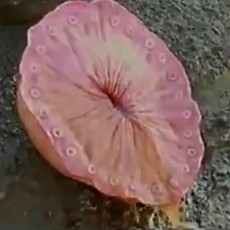Kenbikyo Mushi No Zu ("Illustrations of Microscopic Insects"), a scroll published in 1860, depicts a lively parade of creepy-crawlies as viewed through a microscope. Although most of the insects pictured can actually be seen with the naked eye, the artist's use of a microscope -- still a relatively unusual instrument in Japan in those days -- added a great level of detail to the drawings and made it a rather unique visual work.
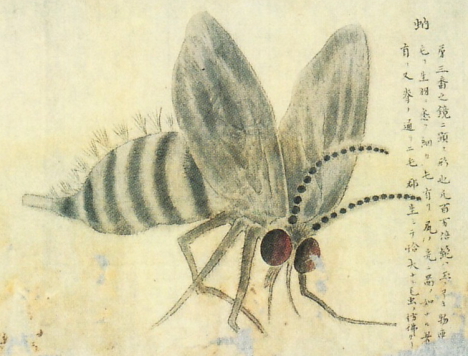
Gnat [+]
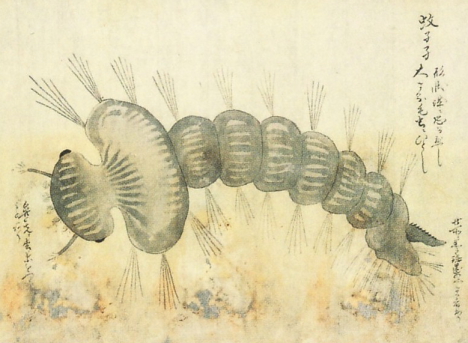
Mosquito larva [+]
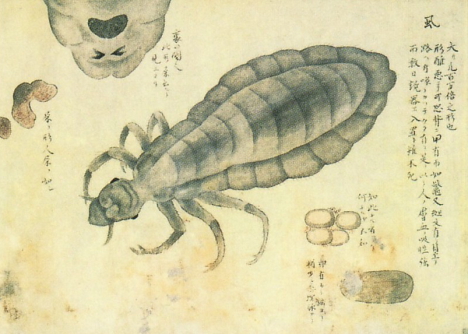
Louse [+]
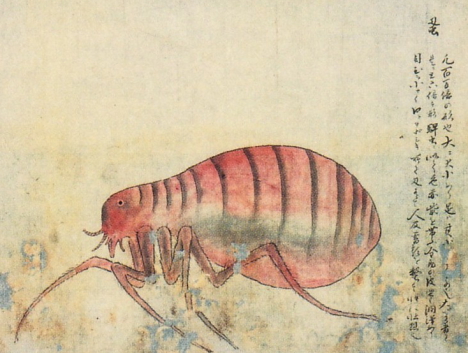
Flea [+]
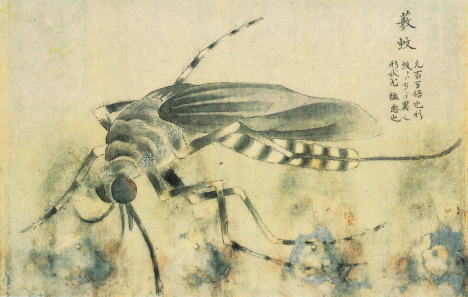
Striped mosquito [+]
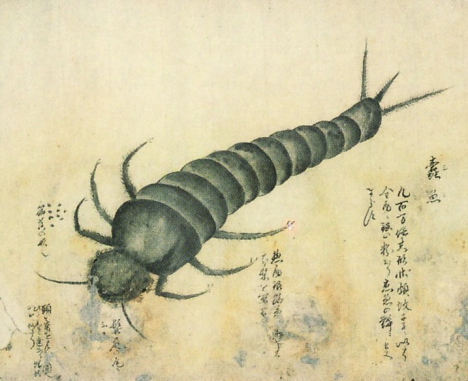
Silverfish [+]
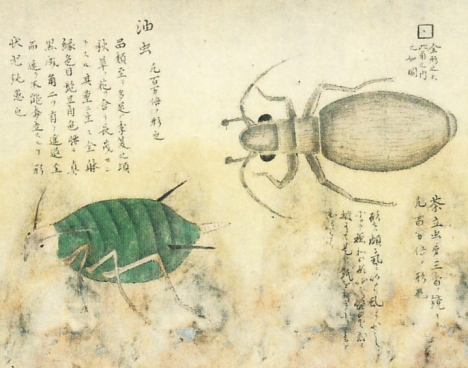
Aphid (left), Psocid (right) [+]
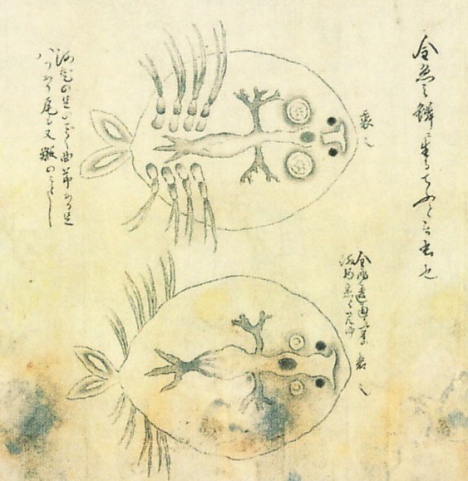
Fish louse [+]
The first microscope was brought to Japan in the mid-18th century (about 150 years after its invention in Europe) by Dutch traders at Nagasaki, and it was introduced to the public by pharmacologist Rishun Goto in a 1765 book entitled Oranda-banashi ("Story of Things Dutch"). Soon afterward, production of the first Japanese microscopes began in Osaka.
In 1787, Churyo Morishima, a scholar of Western science, published Komo Zatsuwa ("Sayings of the Dutch"), which described the lifestyle and customs of the Dutch in Japan. The document included a section devoted to the microscope, complete with illustrations of insects as seen through the device.
As Japanese microscope technology developed, the device became a popular attraction at carnival sideshows. One notable sideshow in Nagoya in 1820 put an assortment of fleas, lice, mosquitoes and other bugs on public display. According to written records of the event, many spectators shuddered with fear as they peered through the microscopes, which made the creatures look as large as a human hand. Others viewed the microscopes with excitement, as they offered a glimpse into a previously unknown world.
The Tohoku University Library houses the original copy of the Kenbikyo Mushi No Zu scroll.
[See also: Mythical 16th-century disease critters]












